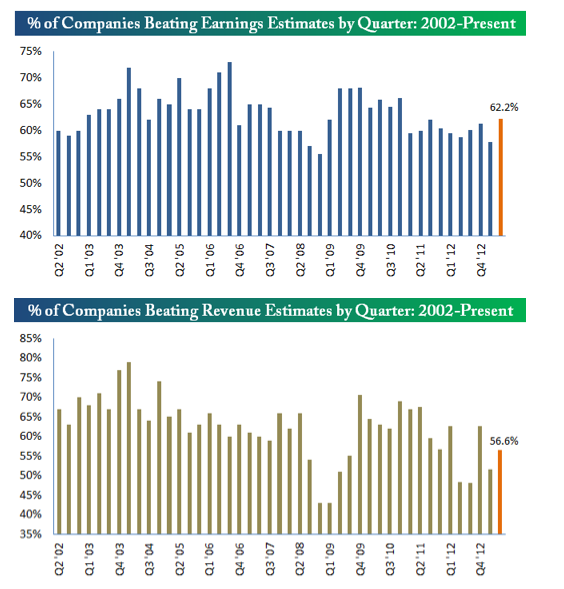By: Tony Campos, Director, SI Product Management, Americas, FTSE Russell
The Securities and Exchange Commission (SEC) has made its move on climate risk disclosure. With the launch last month of a consultation on standardizing climate-related disclosures by public companies, the US market regulator has set a train in process that will make it easier for investors to understand the risks and opportunities posed by the transition away from fossil fuels.
This move is not before time. The United States trails other jurisdictions in requiring climate-related corporate disclosures. Meanwhile, the low-carbon transition is firmly underway. It is most visible in the energy and automotive sectors, where insurgent clean energy and electric vehicle companies are challenging the incumbents. Across a growing number of sectors, companies’ climate transition strategies provide a point of differentiation and are likely to drive future investment performance.
This poses a challenge for investors. The SEC process will take many months, if not years, to reach its conclusion. Whatever it decides will be contested in the courts. Investors are likely to face several more years of, in many cases, inadequate disclosure of investment-relevant climate information by issuers.
Fortunately, the market, both in the United States and beyond, has not waited for regulation. A range of market-led initiatives have seen investor collaborations, not-for-profit groups, academic institutions and financial data providers work to encourage disclosure, collect corporate climate information and develop investable products to help investors understand and respond to the low-carbon transition.
One of the most ambitious of these is the Transition Pathway Initiative (TPI). Led by asset owners, it uses data supplied by FTSE Russell to analyze how companies are managing climate risks and opportunities. Companies’ management quality is assessed against a series of indicators, covering issues such as company policy, emissions reporting, targets, strategic risk assessment and executive remuneration. Their carbon performance is also analyzed, to understand whether their emissions trajectories are in line with scenarios such as consistency with national targets under the Paris Agreement, or with more ambitious targets that would hold global warming to below 2°C.
The data that TPI uses maps well to the information that the SEC is proposing that companies report. The SEC is calling on companies to report on the governance of climate risk, their direct carbon footprints and, where material, their indirect (Scope 3) emissions. It also wants to see companies discuss their transition plans.
Once collected and standardized, this data can be put to a range of uses by investors, including integration into active investment strategies, as a basis for engagement with company management, or to exclude poor performers.
Critically, it can also be used to construct benchmark indexes on which passive investment products can be based. Large, institutional investors increasingly recognise that they can’t respond to climate risk and opportunity without addressing their passive portfolios.
The New York State Common Retirement Fund (NYSCRF), the third-largest public pension fund in the United States, is one such investor. At the end of last year, it allocated US$2 billion of its assets to tracking the Russell 1000 TPI Climate Transition Index.
The index is designed to mimic the performance of the Russell 1000 benchmark but is weighted towards companies that perform well against the TPI assessment. It does not automatically exclude any companies or sectors, but overweighs climate leaders and underweights laggards. This means that the index has a carbon intensity (volumes of carbon dioxide emitted for each unit of revenue generated) some 40% below the Russell 1000 and is exposed to companies collectively holding 60% of the fossil fuel reserves of the benchmark.
The index also enhances exposure to companies based on how much of their revenue comes from the green economy. That means the companies providing the goods and services that will enable the transition to a low-carbon economy are not just included in the index but are overweight compared with the benchmark.
Our Climate Transition Indexes are not designed to deliver alpha although, over the past five years, the Russell 1000 TPI Climate Transition Index has delivered an average annual return of 15.9%, compared with 15.8% by the Russell 1000 benchmark, with lower volatility. Instead, they are designed to help tilt portfolios towards the low-carbon transition, including those companies – regardless of sector – that are most successfully adapting to a net-zero global economy.
The move by the SEC to mandate climate risk disclosure will prove enormously helpful in the future in equipping investors with the information they need to understand that transition. But the message from NYSCRF is clear: the tools exist that can help them respond to climate risk and opportunity today.
For more insights on climate investing, subscribe to our blog. Click here to read the case study
The green economy investment opportunity comprises companies with a collective US$4 trillion market cap, equivalent to 5% of the total listed equity market. It has grown faster than the overall equity market since 2009 and is estimated to have overtaken the size of the oil & gas sector. See Investing in the green economy – sizing the opportunity, FTSE Russell Index Insights, December 2020.
Data as of March 31, 2022
This post first appeared on April 14, 2022 on the FTSE Russell blog
PHOTO CREDIT: https://www.shutterstock.com/g/Sepp+photography
Via SHUTTERSTOCK
© 2022 London Stock Exchange Group plc and its applicable group undertakings (the “LSE Group”). The LSE Group includes (1) FTSE International Limited (“FTSE”), (2) Frank Russell Company (“Russell”), (3) FTSE Global Debt Capital Markets Inc. and FTSE Global Debt Capital Markets Limited (together, “FTSE Canada”), (4) FTSE Fixed Income Europe Limited (“FTSE FI Europe”), (5) FTSE Fixed Income LLC (“FTSE FI”), (6) The Yield Book Inc (“YB”) and (7) Beyond Ratings S.A.S. (“BR”). All rights reserved.
FTSE Russell® is a trading name of FTSE, Russell, FTSE Canada, FTSE FI, FTSE FI Europe, YB and BR. “FTSE®”, “Russell®”, “FTSE Russell®”, “FTSE4Good®”, “ICB®”, “The Yield Book®”, “Beyond Ratings®” and all other trademarks and service marks used herein (whether registered or unregistered) are trademarks and/or service marks owned or licensed by the applicable member of the LSE Group or their respective licensors and are owned, or used under license, by FTSE, Russell, FTSE Canada, FTSE FI, FTSE FI Europe, YB or BR. FTSE International Limited is authorized and regulated by the Financial Conduct Authority as a benchmark administrator.
All information is provided for information purposes only. All information and data contained in this publication is obtained by the LSE Group, from sources believed by it to be accurate and reliable. Because of the possibility of human and mechanical error as well as other factors, however, such information and data is provided “as is” without warranty of any kind. No member of the LSE Group nor their respective directors, officers, employees, partners or licensors make any claim, prediction, warranty or representation whatsoever, expressly or impliedly, either as to the accuracy, timeliness, completeness, merchantability of any information or of results to be obtained from the use of FTSE Russell products, including but not limited to indexes, data and analytics, or the fitness or suitability of the FTSE Russell products for any particular purpose to which they might be put. Any representation of historical data accessible through FTSE Russell products is provided for information purposes only and is not a reliable indicator of future performance.
No responsibility or liability can be accepted by any member of the LSE Group nor their respective directors, officers, employees, partners or licensors for (a) any loss or damage in whole or in part caused by, resulting from, or relating to any error (negligent or otherwise) or other circumstance involved in procuring, collecting, compiling, interpreting, analyzing, editing, transcribing, transmitting, communicating or delivering any such information or data or from use of this document or links to this document or (b) any direct, indirect, special, consequential or incidental damages whatsoever, even if any member of the LSE Group is advised in advance of the possibility of such damages, resulting from the use of, or inability to use, such information.
No member of the LSE Group nor their respective directors, officers, employees, partners or licensors provide investment advice and nothing in this document should be taken as constituting financial or investment advice. No member of the LSE Group nor their respective directors, officers, employees, partners or licensors make any representation regarding the advisability of investing in any asset or whether such investment creates any legal or compliance risks for the investor. A decision to invest in any such asset should not be made in reliance on any information herein. Indexes cannot be invested in directly. Inclusion of an asset in an index is not a recommendation to buy, sell or hold that asset nor confirmation that any particular investor may lawfully buy, sell or hold the asset or an index containing the asset. The general information contained in this publication should not be acted upon without obtaining specific legal, tax, and investment advice from a licensed professional.
Past performance is no guarantee of future results. Charts and graphs are provided for illustrative purposes only. Index returns shown may not represent the results of the actual trading of investable assets. Certain returns shown may reflect back-tested performance. All performance presented prior to the index inception date is back-tested performance. Back-tested performance is not actual performance, but is hypothetical. The back-test calculations are based on the same methodology that was in effect when the index was officially launched. However, back-tested data may reflect the application of the index methodology with the benefit of hindsight, and the historic calculations of an index may change from month to month based on revisions to the underlying economic data used in the calculation of the index.
This document may contain forward-looking assessments. These are based upon a number of assumptions concerning future conditions that ultimately may prove to be inaccurate. Such forward-looking assessments are subject to risks and uncertainties and may be affected by various factors that may cause actual results to differ materially. No member of the LSE Group nor their licensors assume any duty to and do not undertake to update forward-looking assessments.
No part of this information may be reproduced, stored in a retrieval system or transmitted in any form or by any means, electronic, mechanical, photocopying, recording or otherwise, without prior written permission of the applicable member of the LSE Group. Use and distribution of the LSE Group data requires a license from FTSE, Russell, FTSE Canada, FTSE FI, FTSE FI Europe, YB, BR and/or their respective licensors



